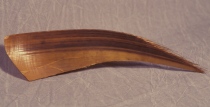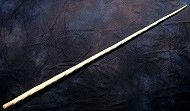The Whales

Whales are adapted to life in water and cannot survive on land for very long if washed ashore. The young are born at sea. The whale has a streamlined shape and smooth body levelled by the thick layer of blubber under the skin. The blubber insulates it and helps to keep it the right temperature. Blubber also acts as a reserve food when the whale is making a long journey. Finally, instead of limbs, it has fins and a powerful tail. Whales still need oxygen to breathe but instead of a nose, they have one or two blowholes. They do have to come to the surface to breathe, but can survive for a long time under water. Some whales can stay underwater for an hour.
Whales can be divided into two groups. There are the whalebone whales, or true whales and toothed whales.
Whalebone or Baleen Whales

Whalebone or baleen whales have strips of whalebone instead of teeth and a double blowhole. This group includes right whales, rorquals and grey whales. They have large triangular horn-like plates that hang in two rows from the whales upper jaw. The plates are made of baleen, more commonly known as whale bone. The whale has many of these plates closely packed together. They create a sort of fringed curtain that is used to filter the whale's food from the seawater. In right whales they can be in the order of 3 metres long in an adult. The largest of all is the blue whale. It can measure up to 36 metres and weigh 160 tonnes.
Toothed whales

The other group of whales are the toothed whales. They have teeth and a single blowhole. The teeth can vary in number from only two, to many in some species. This group includes dolphins, killer whales, sperm whales and narwhals.
Whales feed mainly on plankton. This is a huge carpet of tiny living organisms that is suspended in the upper layers of the sea. It includes many plants and animals, but the favourite food is the whale is a shrimp-like creature called krill.
The Right Whale
The right whales were the most hunted whales in the Arctic. They are so named because in the early days of whaling they were the 'right' whales to hunt. There were several reasons for this. They are relatively slow swimmers and often move in shallow water. They also floated after being harpooned. The Black Right Whale was severely affected by hunting. The Green Right Whale population was also heavily hunted in the 1700s and 1800s. Now so few remain it is not known if the species will survive. Since 1933 both species have been protected from commercial hunting, but they have shown little sign of recovery.